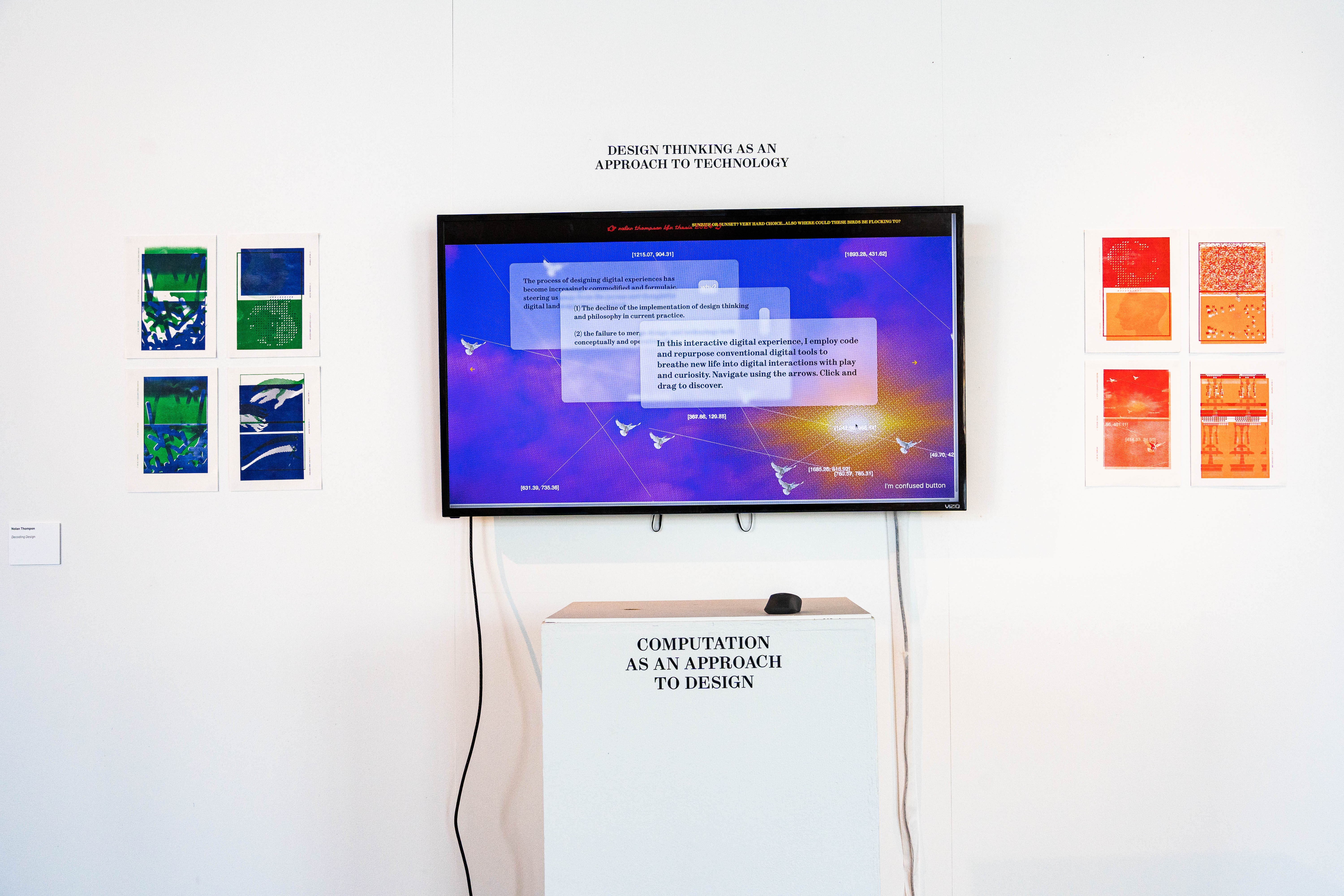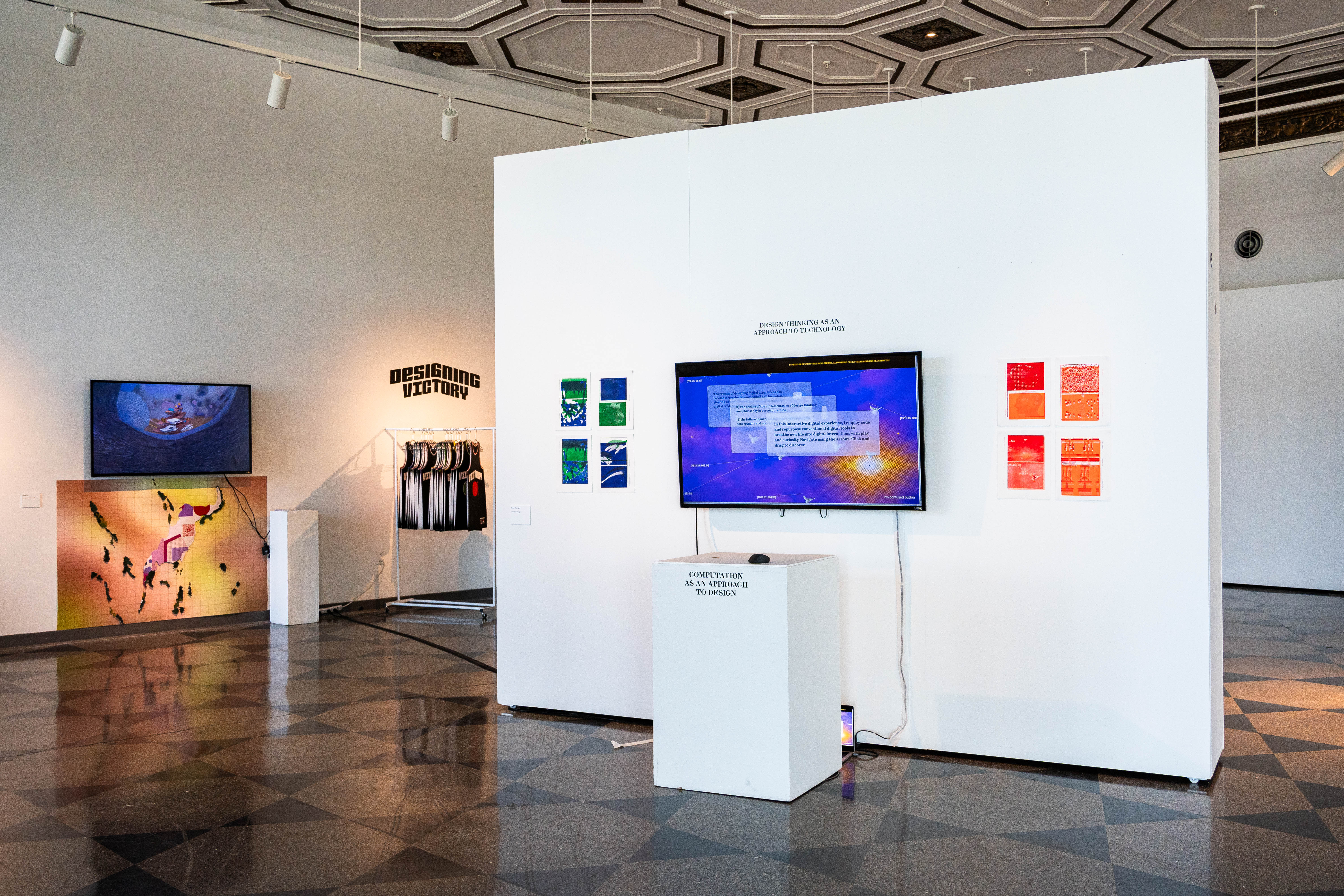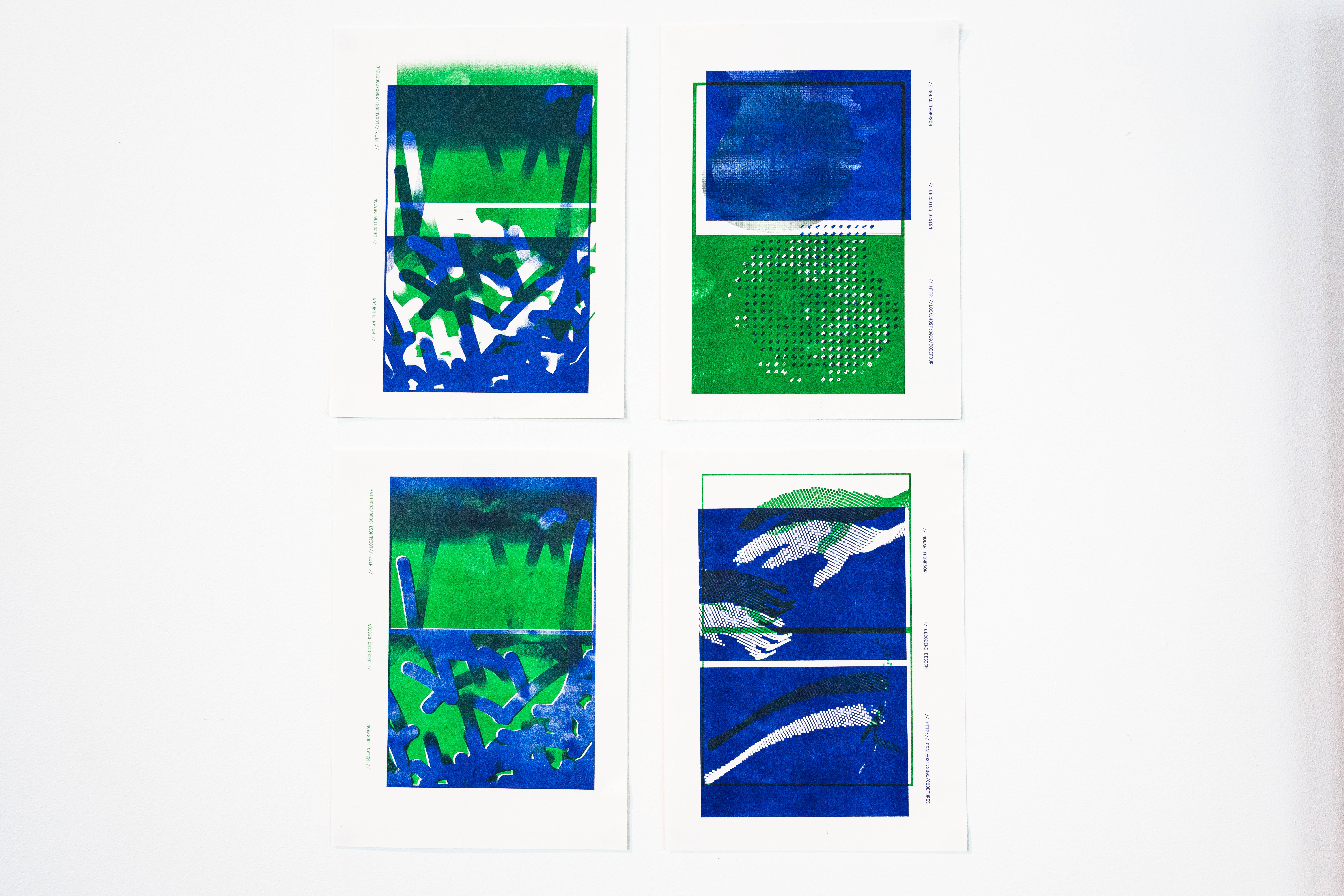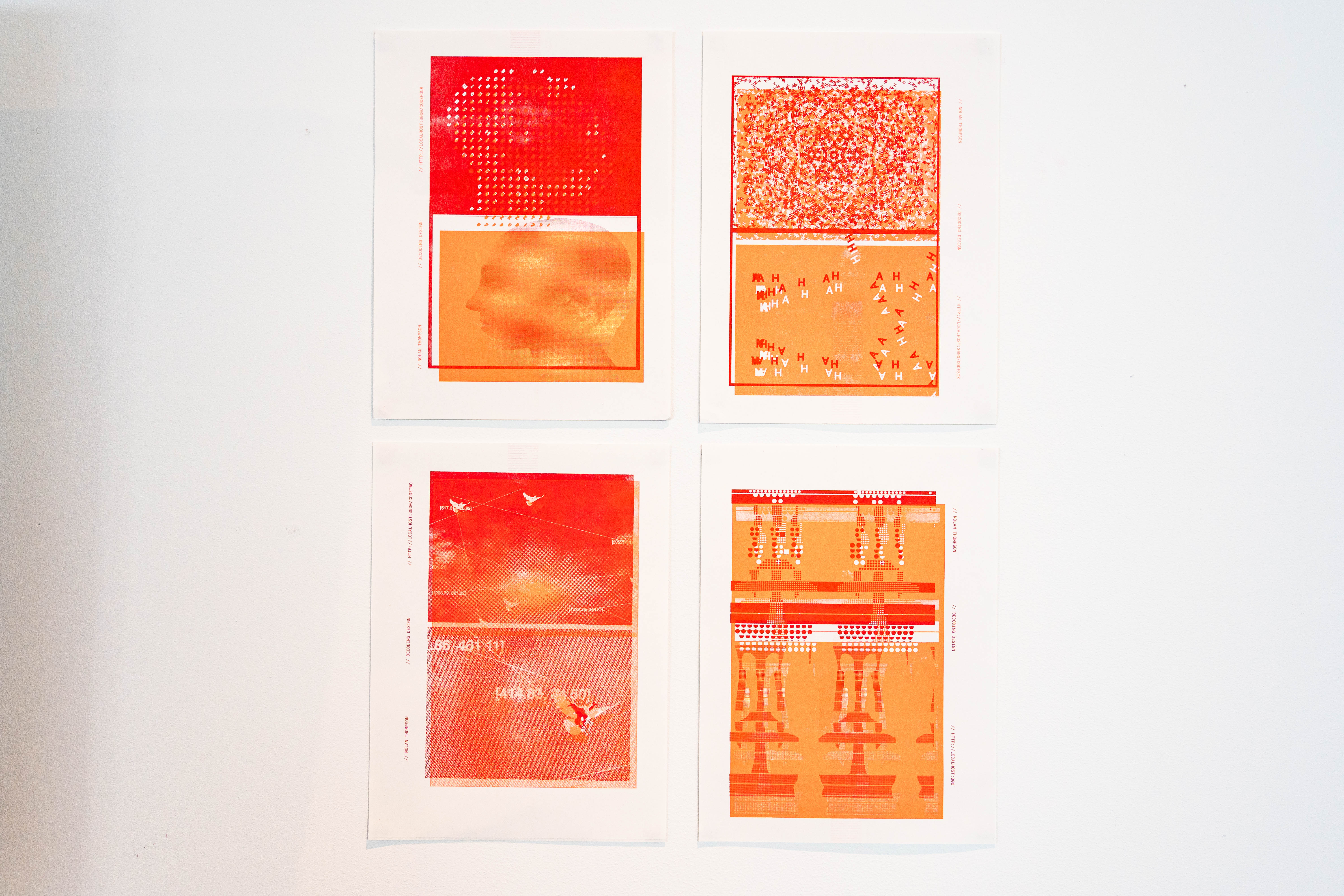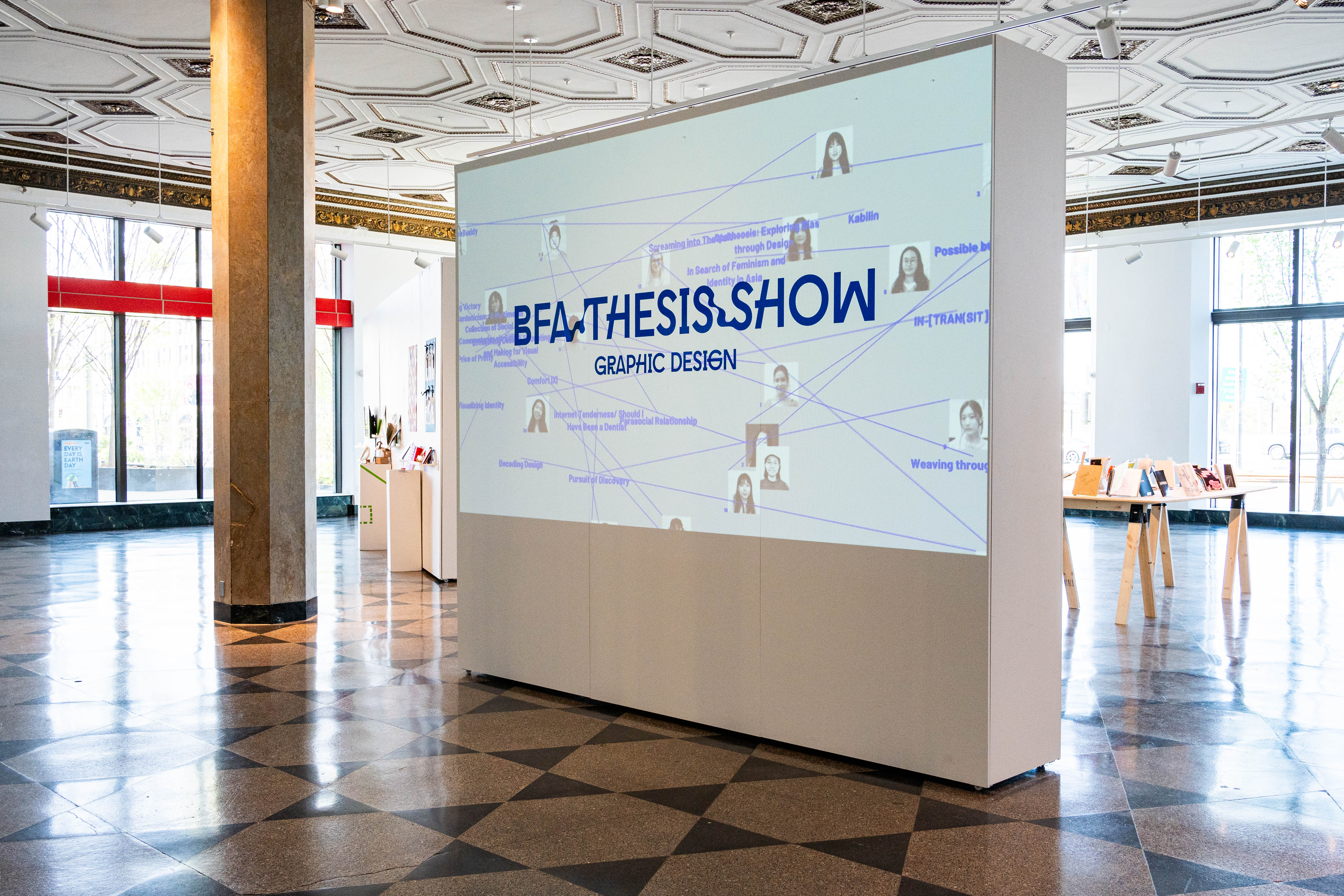NOLAN THOMPSON

DECODING DESIGN
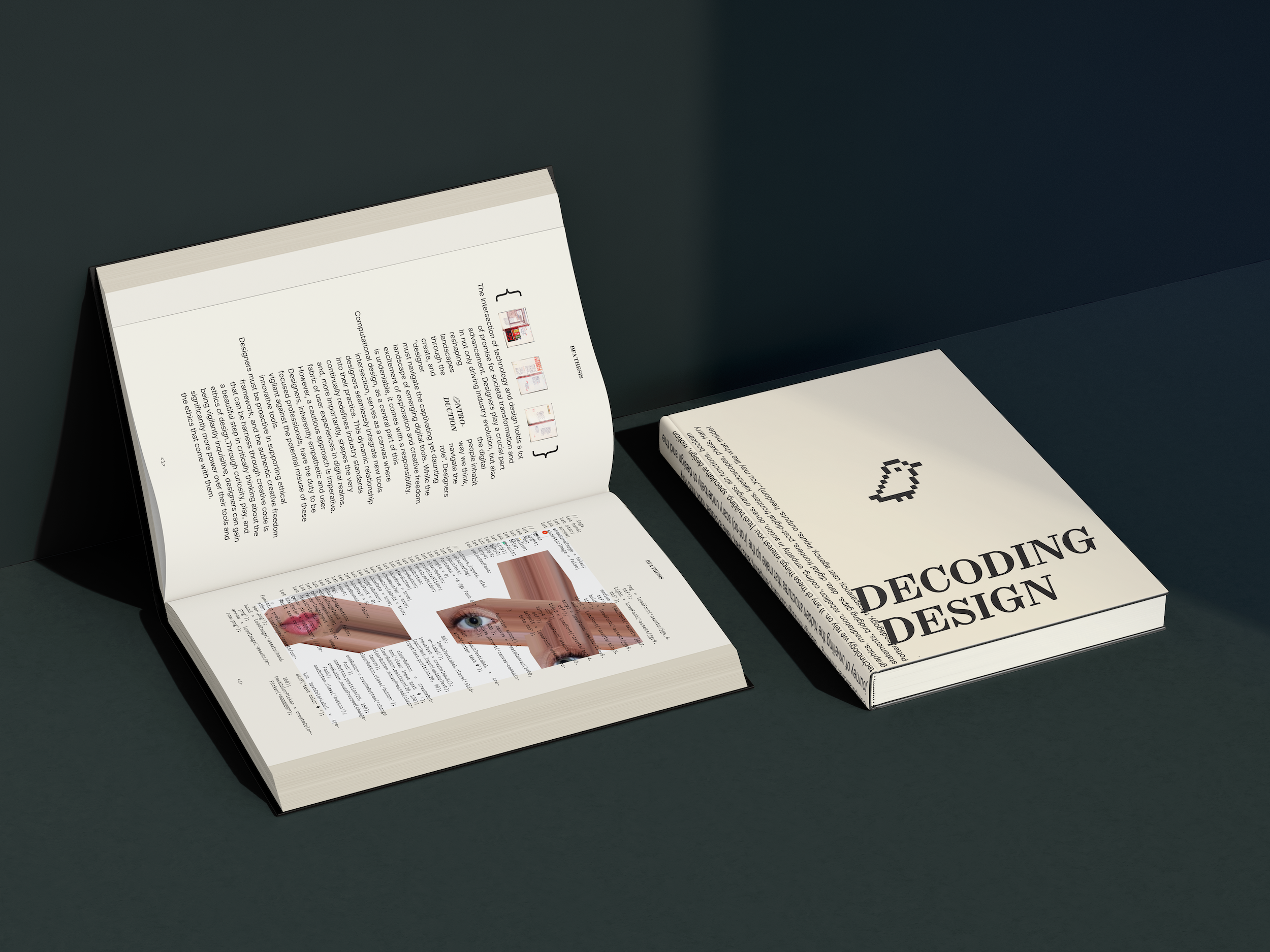
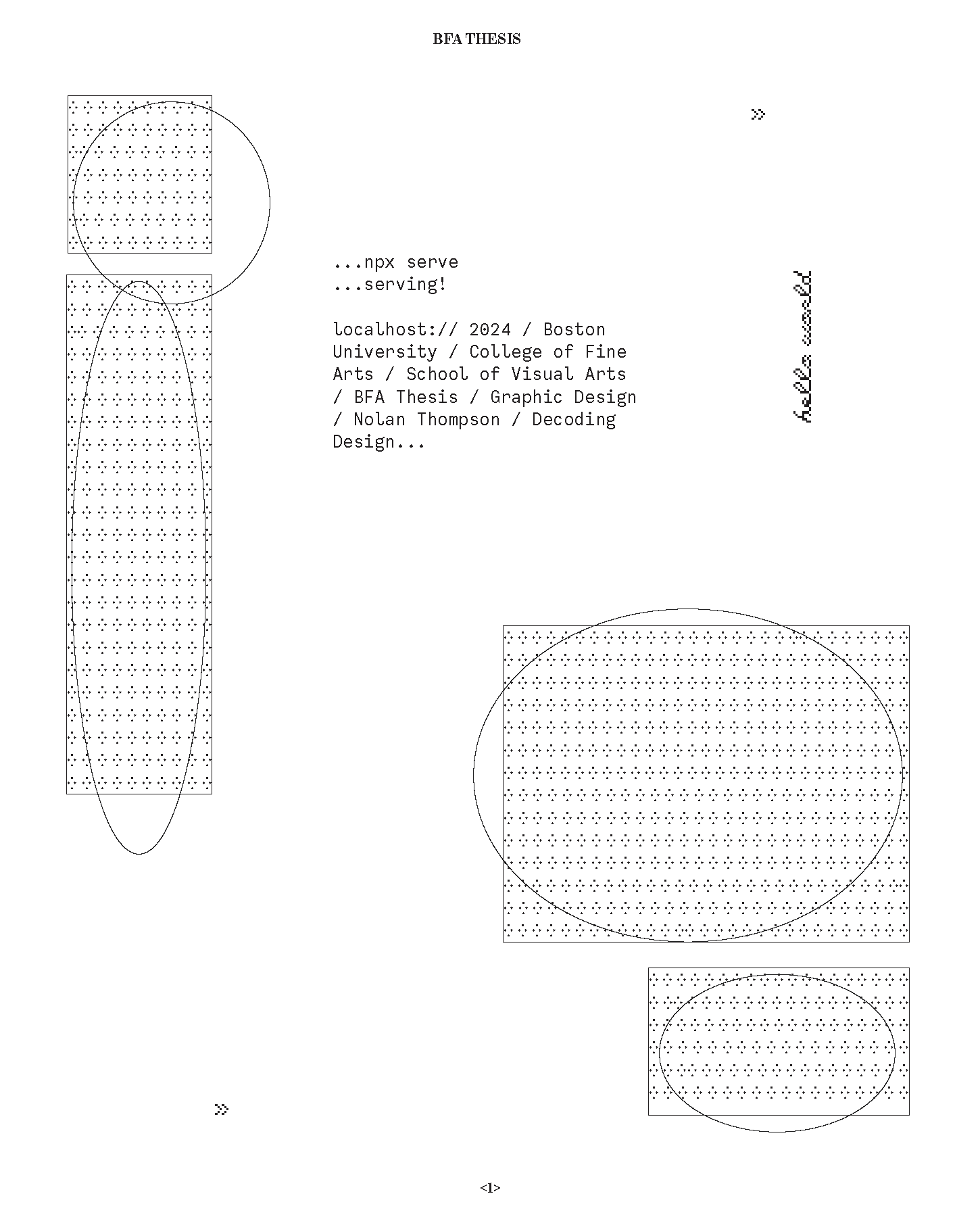
Thesis Statement
Being a designer demands we critically, curiously, and empathetically engage with the technology that is unequivocally linked to our practice. Data-driven tools open a door to unprecedented ways to think, make, and engage with design. With no predetermined or imperative outputs, designers can embrace play and break boundaries. The act of play allows for a deeper understanding of the connection between technology and design that goes beyond technical comprehension, but actually creates space for critically engaging with the possibilities that exist in this space.
I believe all designers and people alike should have some form of code literacy, and creative-code is simply one avenue that can help integrate design with the technology that supports it. As a playful conductor of these technologies, I expand my creative freedom and return agency to the user through design processes that emphasizes conscious interactivity, increases code literacy, and utilizes transparent tool-building.
Through both building and recontextualizing digital tools utilizing creative code, I engage with technology and demystify the hidden structures of the digital landscape to promote more empathetic, transparent, and human-honoring uses of design and technology.
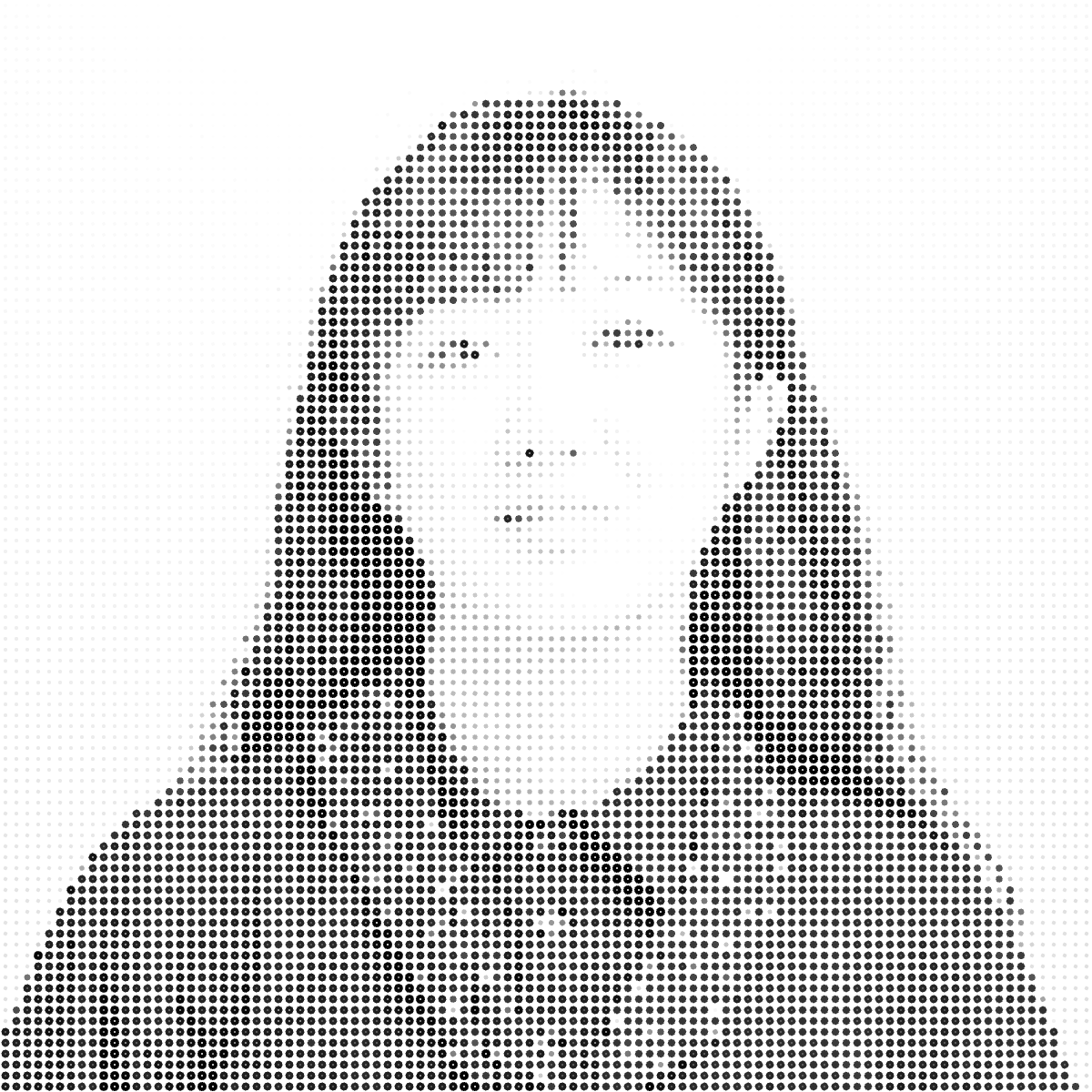
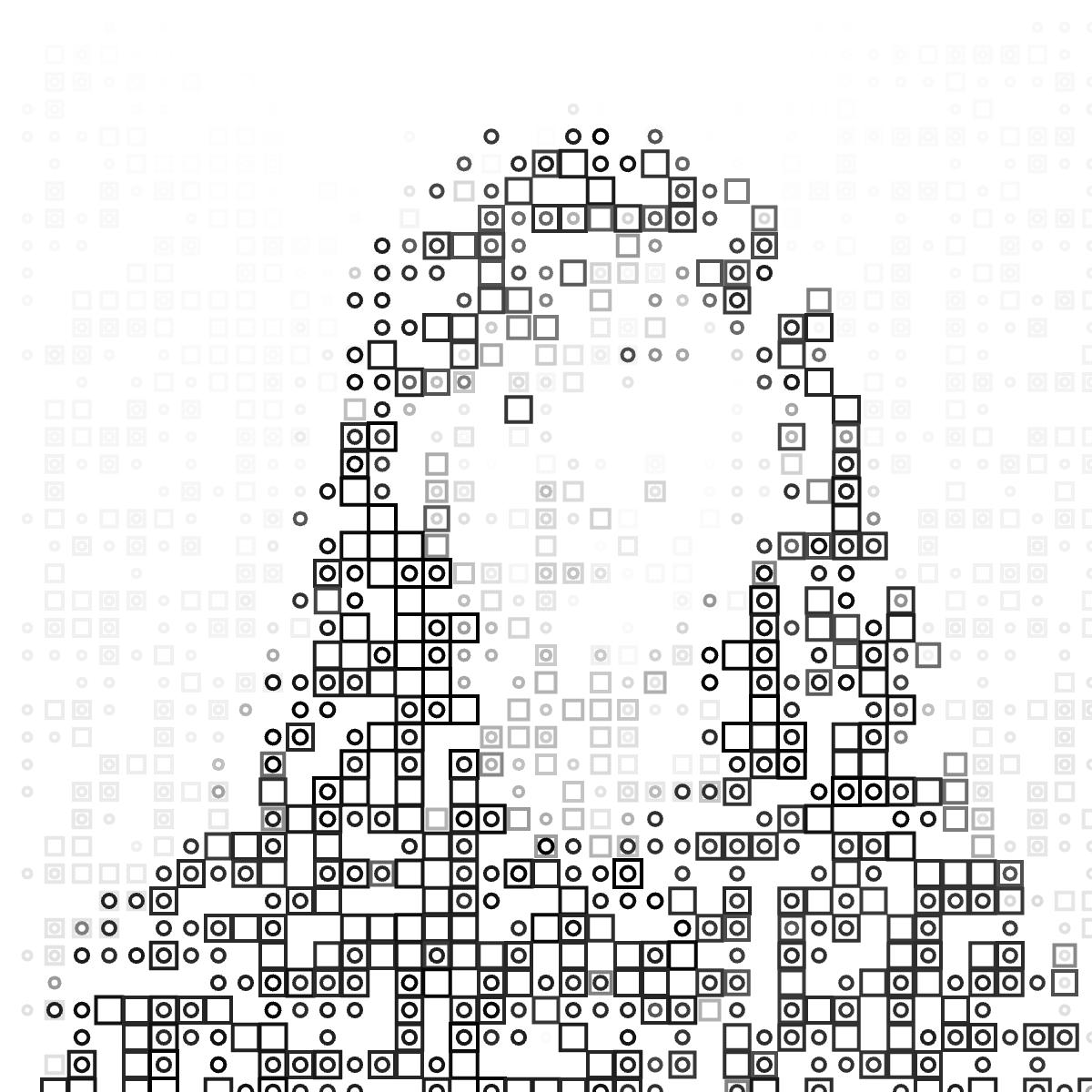
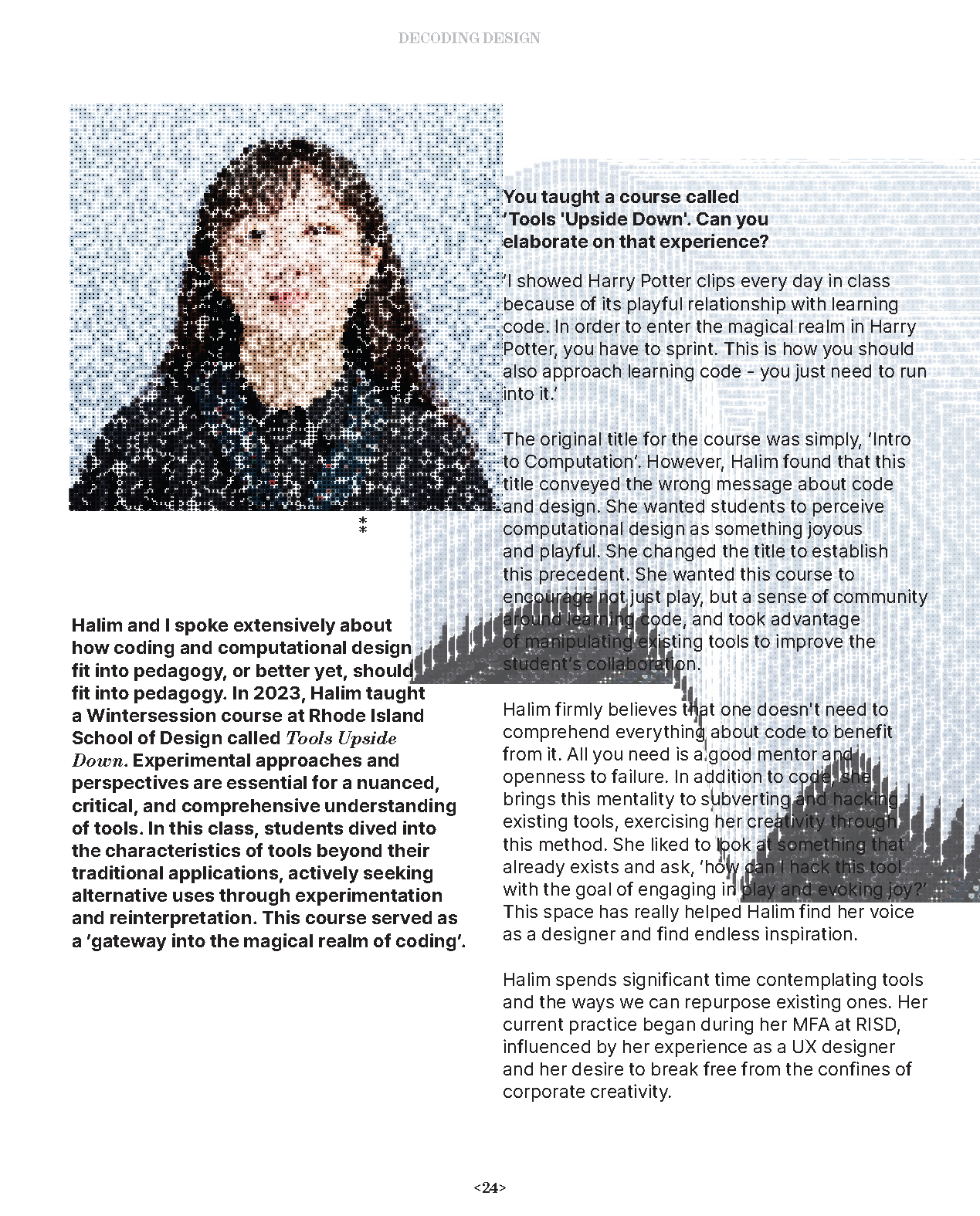
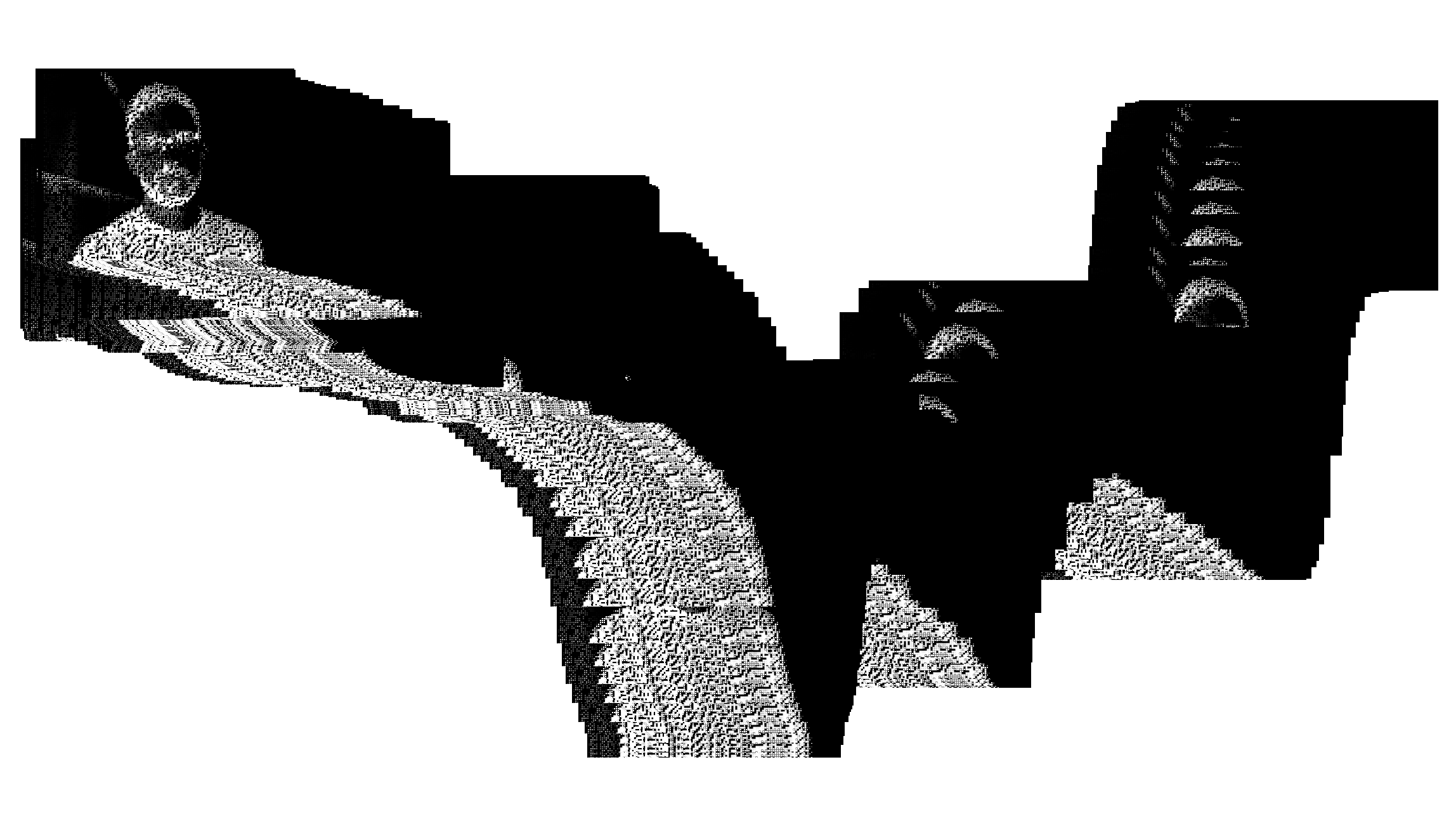
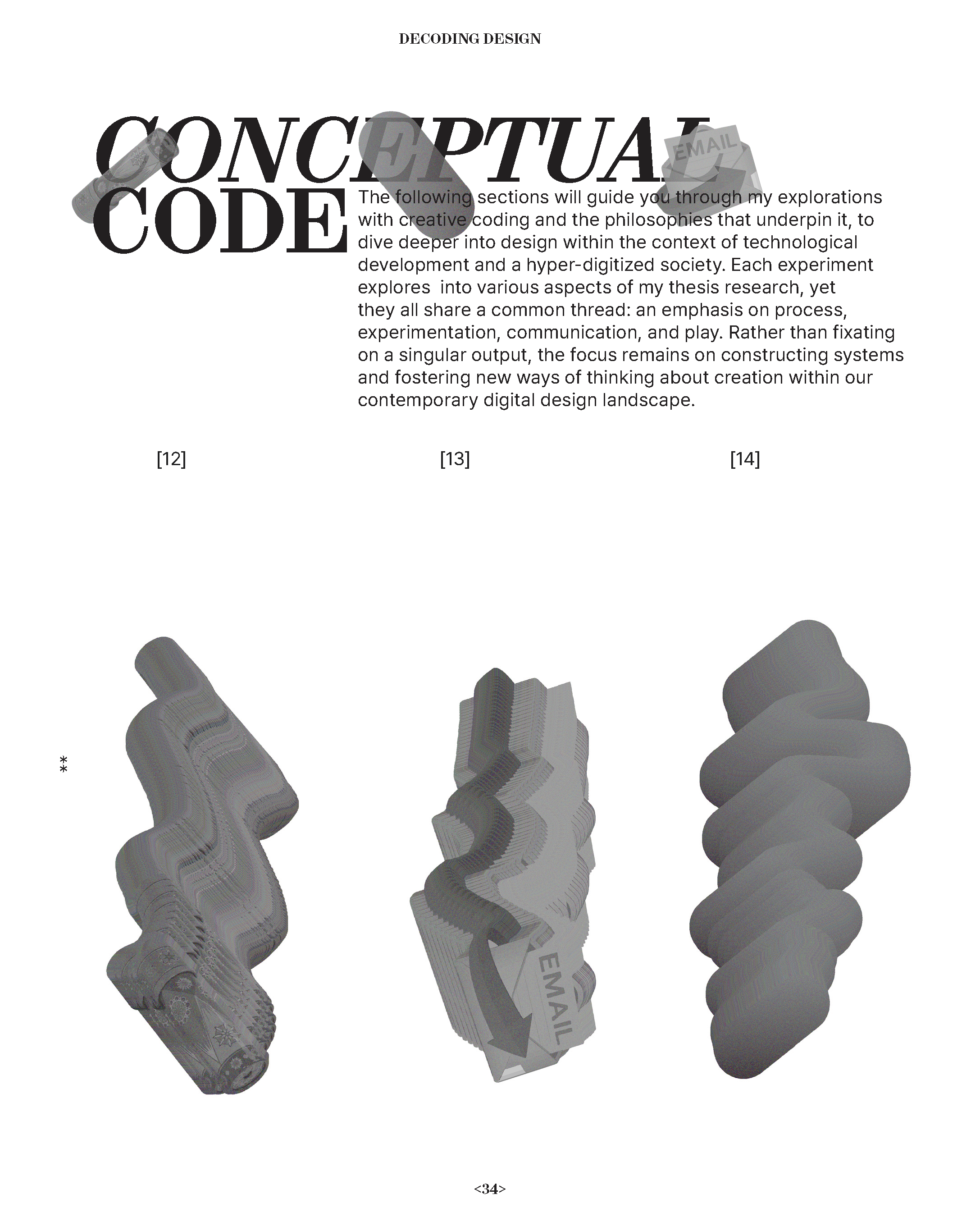
Interactive Website & Installation
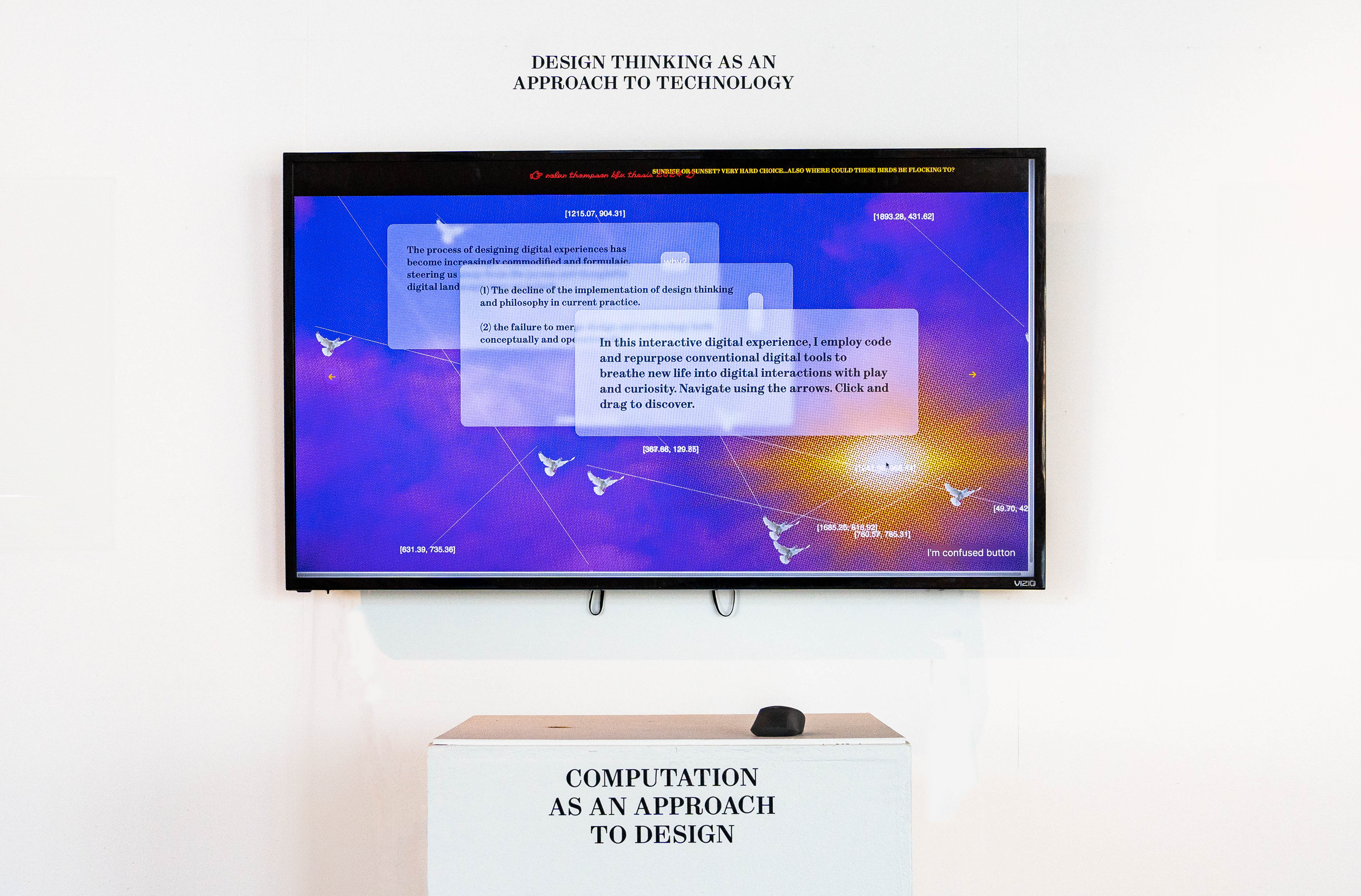
This whole concept really comes down to questioning how we engage our users as digital designers. In a design future that is so automated and profit-driven, I believe acts of radical play can create space for more empathy and forward-thinking processes in design and technology.
Code Experiments: Designing with Sine
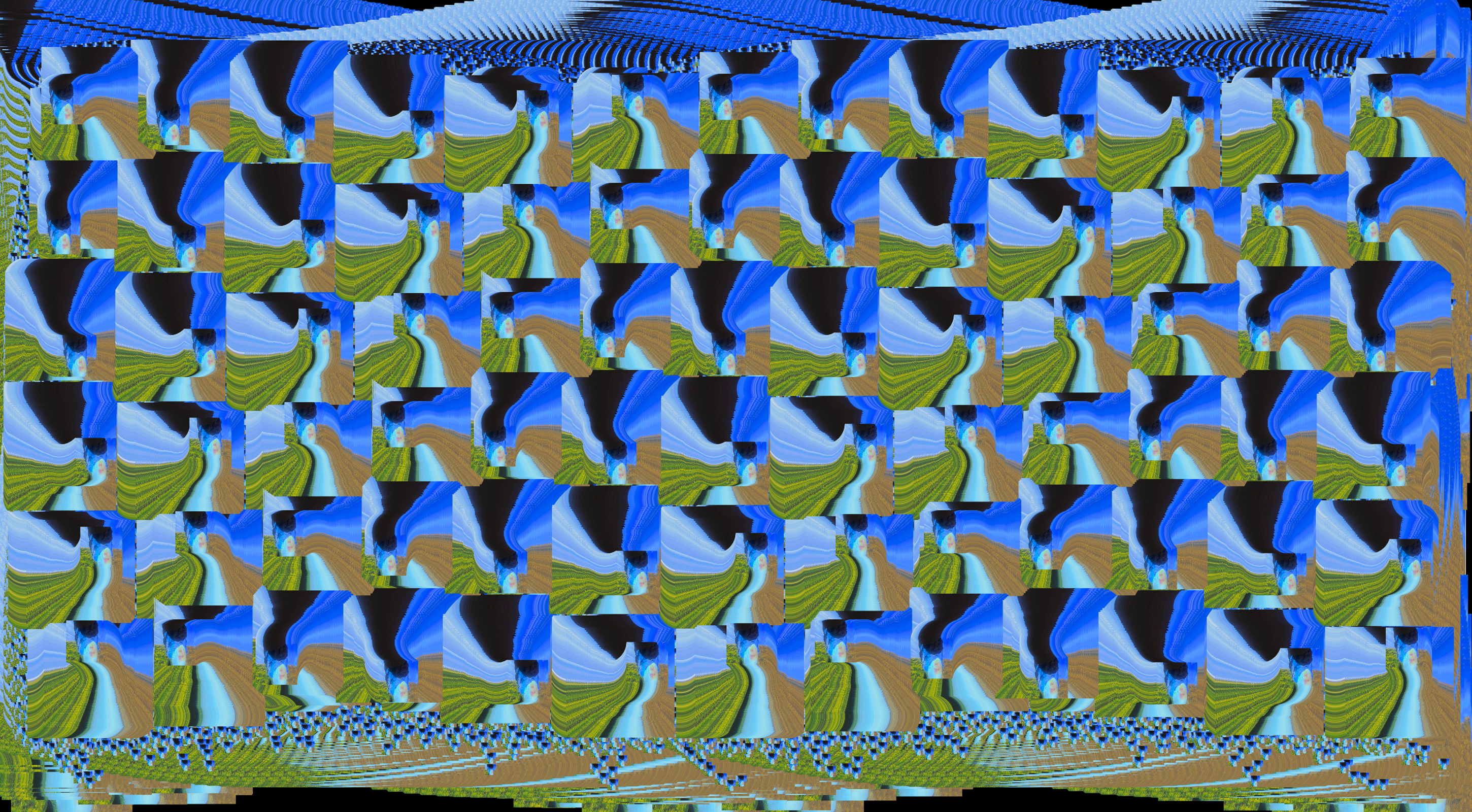
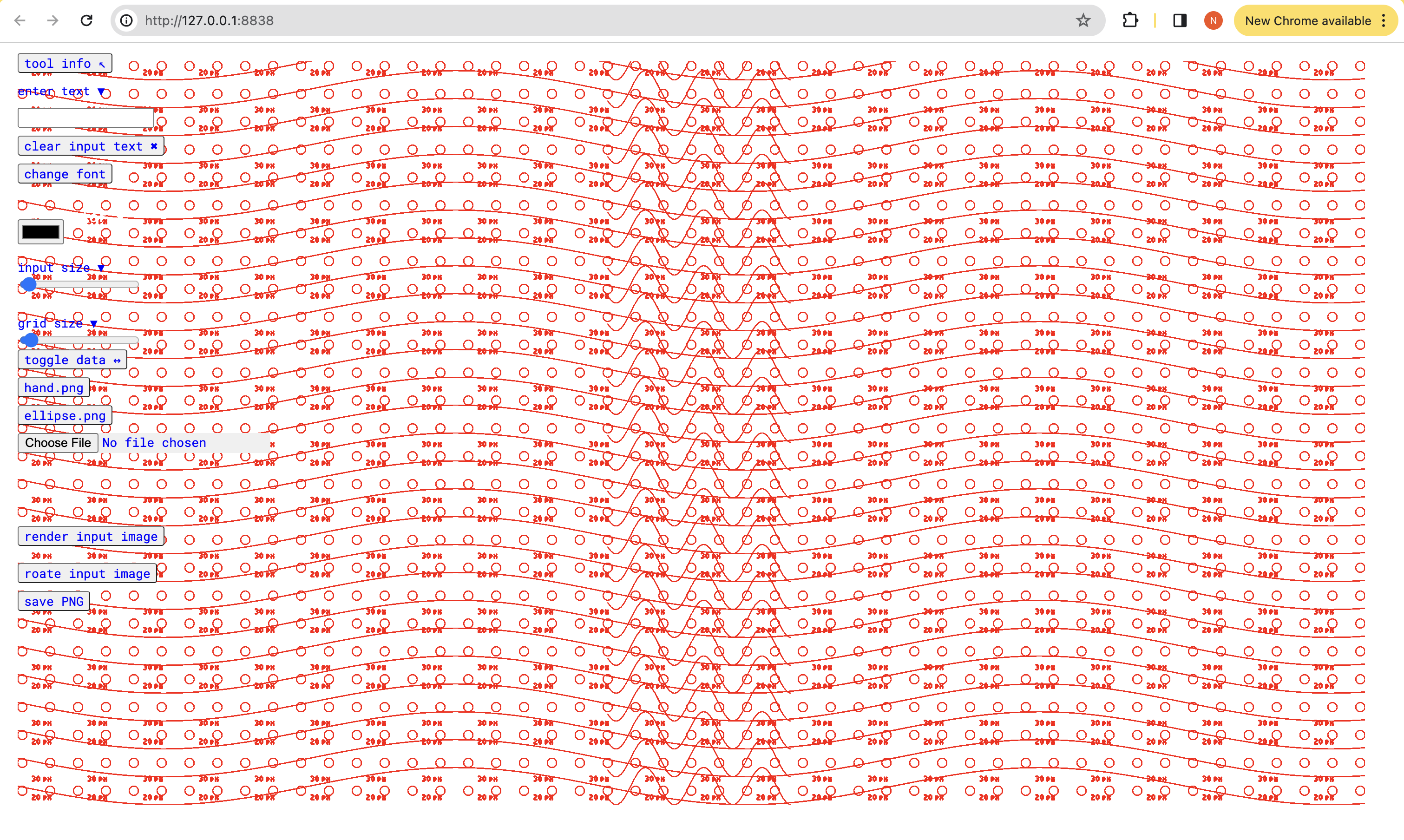
Code Experiments: Pixelation Tool
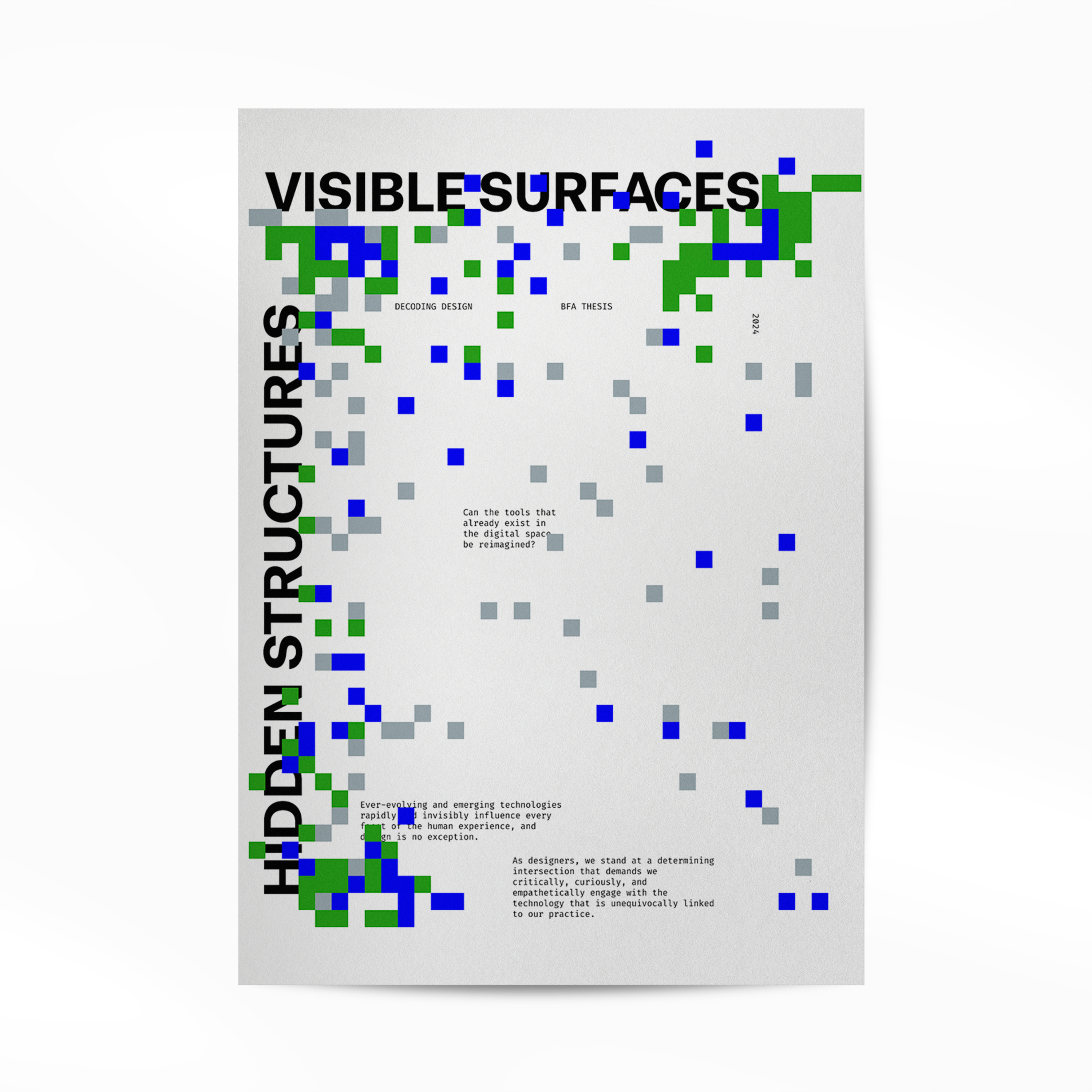
Final Exhibition
